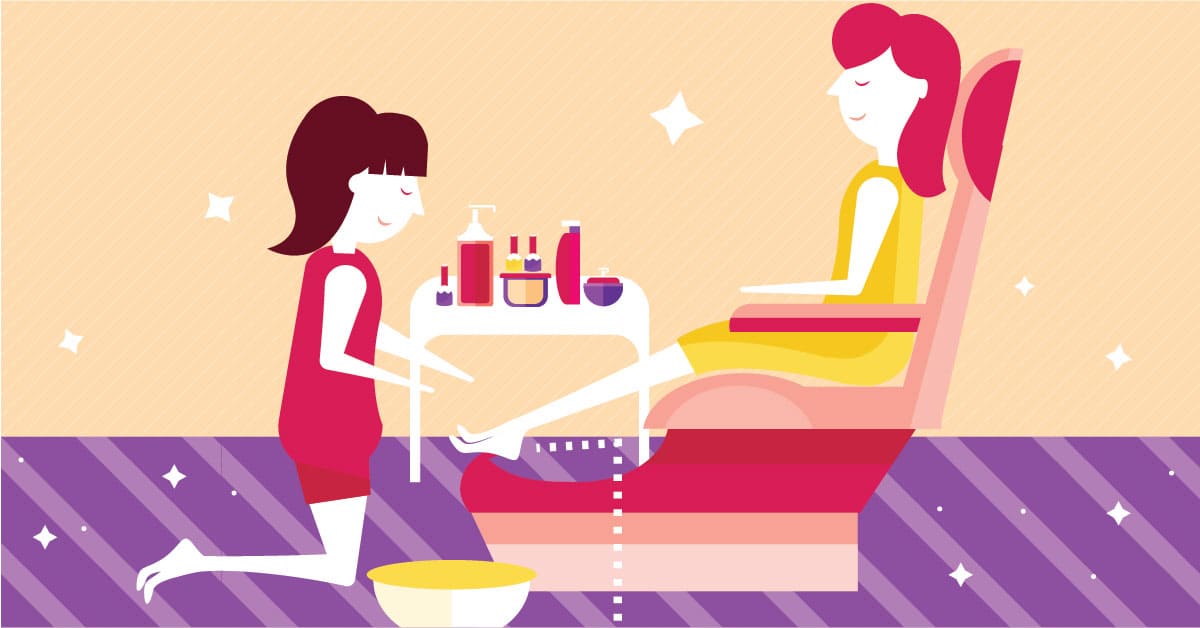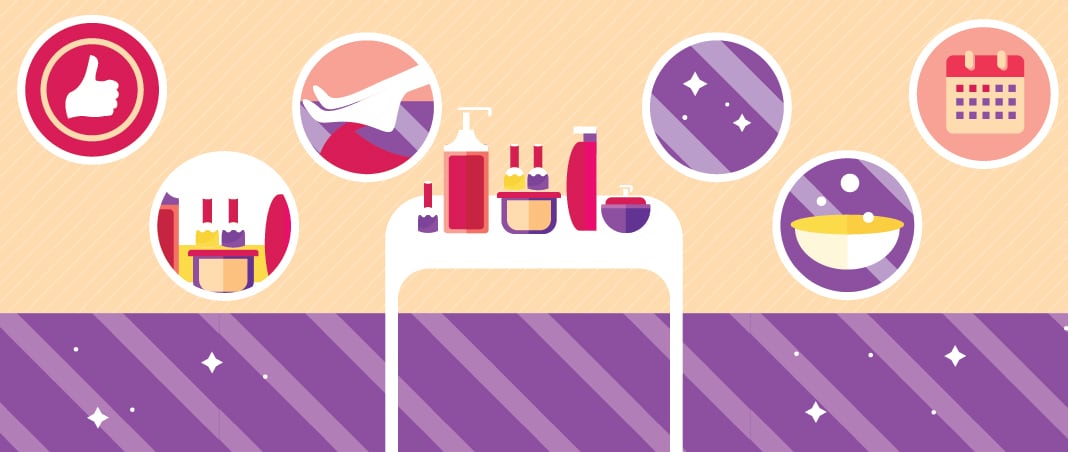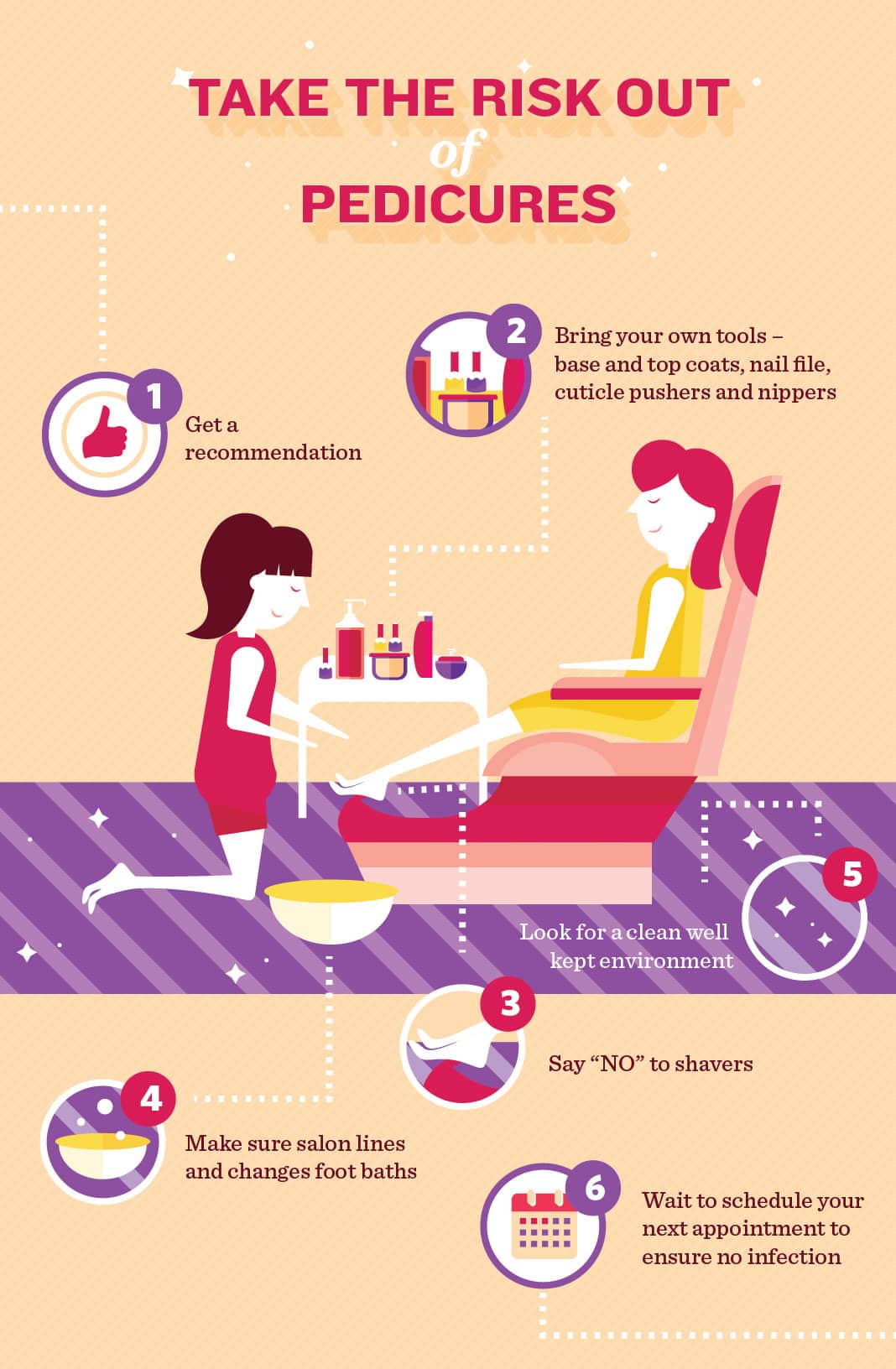How to make sure your feet are happy and healthy
It starts out simple enough. The warm weather prompts you to reach for your favorite pair of sandals, revealing toes that could benefit from some T-L-C. So you book an appointment at the nearest salon and leave anxious to show off your perfectly applied polish. Only, days later, you notice something’s off. It’s an infection and—suddenly—sandals are the last thing you want to be caught wearing.
Risky business
As deliciously indulgent as pedicures are, they can be incredibly risky if you don’t do your research. Case and point: The mycobacterial infections over 100 customers got at a Southern California salon in 2000. Not to mention the women who opted for 2008’s trendy fish pedicure; in which the carps used to remove rough skin and calluses were tested for bacteria that cause soft tissue infections.
It’s something board certified dermatologist and author of Skin Rules Debra Jaliman, MD, has been warning women about for years. “Unfortunately, many salons don’t sterilize their tools,” she says. “And it’s really difficult to [treat, say, a fungal infection,] once it gets into the toenail. It requires [taking] pills for months or even an expensive laser treatment.”
Should you see a podologist?
A 2013 trend report from Skin, Inc. showed that salon-goers are getting smarter, with an increase in consumer demand for truly educated and trained nail techs. These techs have studied podology—“a term that helps distinguish a professional who has advanced training and knowledge in pedicures from the standard nail technician,” writes Skin, Inc.
Similarly, there’s consumer demand for specialty spas. From pedicures to general skin care, more and more niche salons are popping up to better focus, and serve, their clients.
Happy feet
Of course, this does not mean you have to skip regular salons altogether. In terms of calluses, it’s a catch 22: When you don’t exfoliate them, they can breed a microbe that essentially makes your feet stink. And not everyone has the patience for a PedEgg.
Enter: Celebrity manicurist Lisa Jachno, who has polished everyone from Jennifer Aniston to Julia Roberts. Her simple steps will help you avoid any salon risks—and ensure the perfect pedicure.
1) Get a recommendation.
Ask friends where they’ve had a good salon experience. Then, consider taking a tour to see what you’ll be working with.
2) Bring your own tools.
Specifically, bring base and top coats, as well as a nail file (glass versions disinfect easy), cuticle pushers and nippers. “Think about it,” says Jachno. “These items are used on every ones nails. And if someone happened to be cut, their germs are now [yours].”
If you happen to forget your nail kit at home—hey, we are human—then ask the salon how they disinfect their tools. It’s best if they use FDA-approved steam pressurized sterilizers.
3) Say no to shavers.
No one wants smelly feet, but never let a nail technician use a razor blade callus shaver, says Jachno. They’re illegal and can be chock-full of bacteria.
4) Cover all your bases.
You want a salon that lines, and swaps out, their foot baths with plastic liners. “This ensures your relaxing soak is also sanitary,” says Jachno.
5) Do not ignore the floor.
A dirty floor could also mean dirty nail dryers. If a salon can’t keep their environment clean, then chances are they can’t do the same for your feet.
6) Time heals all (physical) wounds.
Afterwards is when you schedule a pedicure. Allow a day or two to pass to ensure you have not received an infection before scheduling your next appointment. Because even if you find the cleanest, safest, salon there is, soaking with an open wound risks infection.


